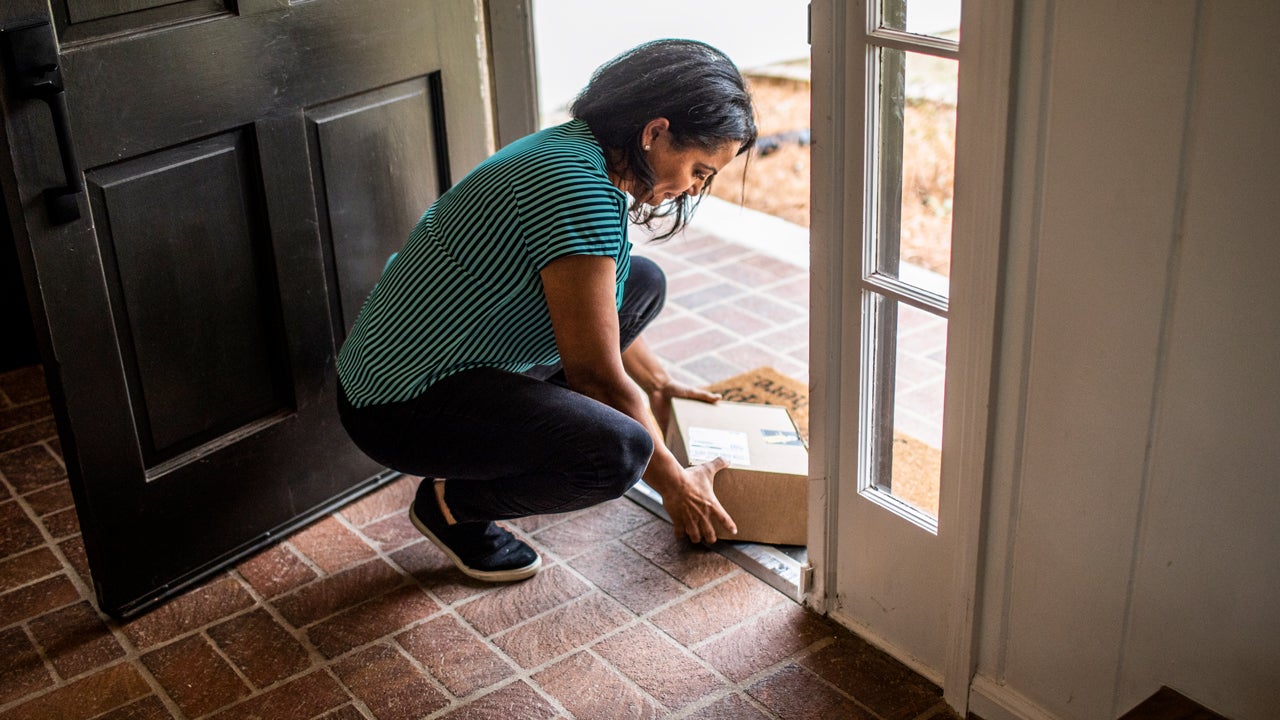California FAIR Plan insurance: What it is and how it works




The California FAIR Plan is an insurance program of last resort for homeowners unable to obtain fire coverage in the private insurance market. Contrary to popular belief, the CA FAIR Plan is not a government-backed program: it is financially supported by California’s private home insurance companies, not taxpayers. Recent turmoil in the California home insurance market has left the FAIR Plan overburdened, strained and increasingly expensive. As of September 2024, the Cal FAIR Plan has more than 450,000 residential policies in force. But, for Californians with homes in high-risk wildfire areas, it may be the only way to financially protect their homes.
Bankrate’s team of insurance experts is here to explain what Californians considering a FAIR Plan need to know.
Beginning July 1, 2024, commercial policies will become eligible for the FAIR Plan’s clearinghouse program. The clearinghouse program, an enactment of 2023’s Senate Bill 505, is designed to help offload FAIR Plan policies to private insurance providers, with the help of brokers and carriers. The news was met with some relief by many insurance experts, who have long stressed how overburdened the CA Fair Plan is.
In a statement to a state legislative committee in March 2024, FAIR Plan president Victoria Roach stated, “We are one event away from a large assessment” and “there’s no other way to say it, because we don’t have the money on hand [to pay every claim] and we have a lot of exposure.”
That event could very well be the recent Los Angeles wildfires. In January 2025, Los Angeles experienced a series of devastating wildfires, and insured losses are estimated to be around $40 billion — but they could be much higher. One of the major blazes, the Palisades Fire, wreaked havoc in the Pacific Palisades, a coastal community in western Los Angeles. The FAIR Plan covered around 22 percent of the structures destroyed in the Palisades Fire and 12 percent of structures destroyed by the Eaton Fire, the other major blaze. In total, the FAIR Plan is looking at a potential exposure of $4.77 billion.
California FAIR Plan insurance explained
The California Fair Access to Insurance Requirements, or FAIR, Plan was established in 1968 to provide insurance coverage to homeowners in high-risk areas, whether that means their property is in a fire zone or along an earthquake fault line. The FAIR Plan is offered through a shared market where licensed insurance companies shoulder the risk of California homeowners who do not qualify for voluntary coverage. As of September 2024, the CA FAIR Plan has $458 billion in dwelling coverage exposure — an increase of more than 61 percent since September 2023.
When an insurance company gets licensed to sell policies in the state of California, it also agrees to financially support the FAIR Plan if it runs out of money following a catastrophic disaster. If a wildfire destroys a swath of homes insured with the FAIR Plan, and there is not enough money in reserves to pay out those claims, the FAIR Plan would turn to the state’s private insurers to help with the cash call.
California FAIR Plan insurance is more limited than a standard homeowners insurance policy. But, a FAIR Plan policy can financially protect homeowners from shouldering the full cost of a loss out-of-pocket. Though a FAIR Plan typically covers fewer types of losses and offers fewer policy options than a private home insurance plan, more coverage can be added at an additional cost. Importantly, earthquake coverage is not included and must be added as an endorsement from the California Earthquake Authority.
California’s FAIR Plan is a last resort option and is intended to be a temporary solution for homeowners who need hazard insurance in California. The FAIR Plan Association recommends that California homeowners apply for private homeowners insurance several times before applying for FAIR Plan coverage. Additionally, homeowners must meet certain other requirements to qualify for the FAIR Plan.
How will the California Sustainable Insurance Strategy affect the FAIR Plan?
Multiple insurance companies limiting or entirely pausing new home insurance policies in California has sent the market careening towards chaos. Beginning late 2022, seven of the 12 largest home insurance companies in California by market share have either paused or placed heavy limitations on writing new policies in the state. With coverage availability shrinking, many homeowners across California have had no option but to resort to a FAIR Plan policy.
In March 2024 State Farm, the largest home insurance company in California by market share, broke the news that it would nonrenew around 70,000 policies, 30,000 of which are estimated to belong to homeowners. It is expected that many of these non renewed policies will migrate to the FAIR Plan, putting the plan at risk for insolvency. FAIR Plan insolvency could also affect homeowners not on the plan. Remember: the FAIR Plan is supported by California’s private insurance companies. If homeowners on the plan incur widespread losses, like those that occur after a wildfire, homeowners with a private policy could potentially see a steep premium increase in order to cover those FAIR Plan losses.
In late 2023, California Insurance Commissioner Ricardo Lara announced the Sustainable Insurance Strategy, a multi-pronged approach to bring stability to the home insurance market and encourage private providers to return to the state. One of the goals named in Lara’s plan is to unburden the FAIR Plan by seeking a commitment from private insurers to write 85 percent of new business in historically underserved areas and to modernize the current FAIR Plan to include homeowners associations and affordable housing projects. However, part of the Strategy would also be for the FAIR Plan to call on homeowners and the state’s insurance companies — instead of insurance companies alone — if the Plan needs to make a cash call after a catastrophic residential loss. Essentially, if the FAIR Plan makes an assessment, it would be both the private insurance companies and homeowners across the state helping to foot the bill. With some experts putting insured losses from the January 2025 wildfires at $75 billion, an assessment could be on the horizon.
We would expect insured losses [from the January 2025 wildfires] to run in the billions of dollars given the high value of homes and businesses in the impacted areas. Losses will be shared among standard homeowners insurers, insurers specializing in high-value excess and surplus homeowners policies, and the California FAIR plan. In addition, commercial property losses could be significant.
— Jason Cooper Vice President-Senior Credit Officer, Moody’s Ratings
What California’s FAIR Plan insurance covers
A California FAIR Plan policy covers much less than a traditional HO-3 does. A standard CA FAIR Plan policy only provides financial protection for your home’s dwelling and your personal property if they are damaged from one of four named perils: fire, lightning, internal explosions and smoke. Liability coverage is not available through the California FAIR Plan, and the standard plan only insures at actual cash value. To compare, an HO-3 policy includes liability coverage, covers your dwelling and other structures on an open-peril basis and offers financial protection for your personal property from 16 different named perils.
A FAIR Plan home insurance policy can be modified with these endorsements, but doing so will increase the cost of coverage:
- Other structures coverage: Other structures coverage protects against covered damage to detached structures like a garage, porch, shed or fence.
- Fair rental value coverage: Available for rental properties, this endorsement covers lost income if the unit is rendered unlivable due to damage sustained from a covered peril.
- Dwelling replacement cost coverage: This endorsement covers the dwelling at replacement cost value (RCV) versus actual cash value (ACV).
- Personal property replacement cost coverage: Insures personal belongings at RCV, which replaces items at their current replacement value without depreciation factored in.
- Ordinance/law coverage: After a covered loss, this endorsement pays to make structural upgrades to a home so it meets residential building codes.
- Vandalism and malicious mischief: Adds financial protection if your home’s physical structure and personal belongings are damaged due to vandalism or malicious mischief or both.
- Debris removal coverage: Pays to clean up debris on the property after a storm.
- Inflation guard protection: This endorsement will automatically raise coverage limits based on inflation, without paying out-of-pocket for more coverage.
- Plants, shrubs and trees coverage: This endorsement includes up to $250 of coverage for landscaping losses.
- Outdoor radio and TV equipment, awnings and signs coverage: This endorsement covers outdoor equipment, signs and awnings from covered perils, with the exception of wind or hail storms.
- Improvements, alterations and additions coverage: This coverage is available for condo owners, and covers damage to improvements or alterations in your unit.
Earthquake insurance is not available through the FAIR Plan. Customers can instead purchase a separate earthquake insurance policy through the California Earthquake Authority (CEA).
In July 2024, the FAIR Plan was sued in the Alameda County Superior Court for refusing to investigate and pay wildfire smoke damage claims. It is a class action lawsuit, with around 350,000 to 400,000 estimated FAIR Plan policyholders.
What is a Difference in Conditions (DIC) policy in California?
Purchasing FAIR Plan home insurance endorsements can offer broader financial protection, but is still not the same as a private insurance policy. Homeowners on the FAIR Plan who are unable to obtain a policy in the private market but want the kind of financial protection offered by an HO-3 can purchase a Difference in Conditions (DIC) policy. It is a supplemental form of insurance meant to fill in the coverage gaps left by a FAIR Plan policy. It includes coverage for a wider selection of perils, like theft, and can provide liability insurance. A DIC policy also typically offers coverage for landslides, mudflows, earthquakes and floods. Not every insurer in California offers this kind of coverage, but the California Department of Insurance maintains a list of providers that offer it.
Who is eligible for California’s FAIR Plan?
California’s FAIR Plan offers property insurance for owner- and tenant-occupied buildings, seasonal homes, condos and rental properties (personal property coverage only). To get coverage, property owners must meet certain criteria. FAIR Plan applicants must own a single-family home, townhome, condo or have a rental unit in California, and the home must meet certain building requirements.
Some homeowners do not meet FAIR Plan criteria, even if they are considered high-risk. The FAIR Plan does not cover vacant homes that are unoccupied for 50 percent of the year, homes with existing damages that have not been repaired and homes that are tied to illegal activity based on state and federal laws.
Most importantly, homeowners seeking to get onto the California FAIR Plan must demonstrate that they have been denied coverage from the private insurance market multiple times. The FAIR Plan was designed as an insurer of last resort, and policies are generally reserved for the most high-risk homes in the state.
How much California’s FAIR Plan insurance costs
Like standard home insurance, California FAIR Plan premiums vary based on a number of rating factors. This includes the location, age and condition of the home, proximity to a fire station, the homeowner’s claims history, the types and amount of coverage and the deductibles chosen. In a 2022 interview with KCRA, a FAIR Plan spokesperson stated that the average cost of a policy is about $3,200 per year, which is significantly more than a typical home insurance policy in California, where the average homeowner pays $1,429 for $300,000 in dwelling coverage as of February 2025. Keep in mind that the FAIR plan covers much less than a typical home insurance policy, and that homeowners on the FAIR plan usually pay more for less. The cost to insure a home can be even more expensive if purchasing policies to complement the FAIR Plan, such as a difference in conditions, flood or earthquake policy.
How to get California’s FAIR Plan
The process of purchasing a California FAIR Plan is pretty simple. However, the process is slightly different than getting a traditional home insurance policy. Here’s a brief overview of how to get a California FAIR Plan:
- Find a provider: California FAIR Plan insurance can be purchased through a licensed insurance broker in the state. Homeowners can use the online broker search tool on the FAIR Plan website to find local agents within or near their ZIP code. Brokers do not collect a fee when selling FAIR Plan insurance policies like they do with standard home policies.
- See if you are eligible: Not every homeowner will be able to qualify for a California FAIR Plan. Your broker will run an extensive search to see if you can get preferred homeowners insurance coverage through the traditional marketplace before you will be allowed to move forward with the FAIR Plan application.
- Complete the application: If you work with a broker, they can help you fill out the application, choose an appropriate amount of coverage and endorsements and calculate the fair market value of your home. Once the application is completed, you will get an instant rate quote. Keep in mind that if you apply for a FAIR Plan without a broker, you cannot get an immediate price estimate.
- Scheduled a home inspection: Depending on your home’s location, a representative from the FAIR Plan might ask to schedule a home inspection. This will help them better understand your home’s insurability. For example, if your house is located in a heavily wooded area with a high risk of wildfires, it could impact the amount of coverage you are eligible for.
- Pay the premium: Once your application is approved, the last step is to pay the first month’s premium. Your coverage will only take effect once you make the first payment. Homeowners on the FAIR Plan have the option to pay in full, in threes or each month.




